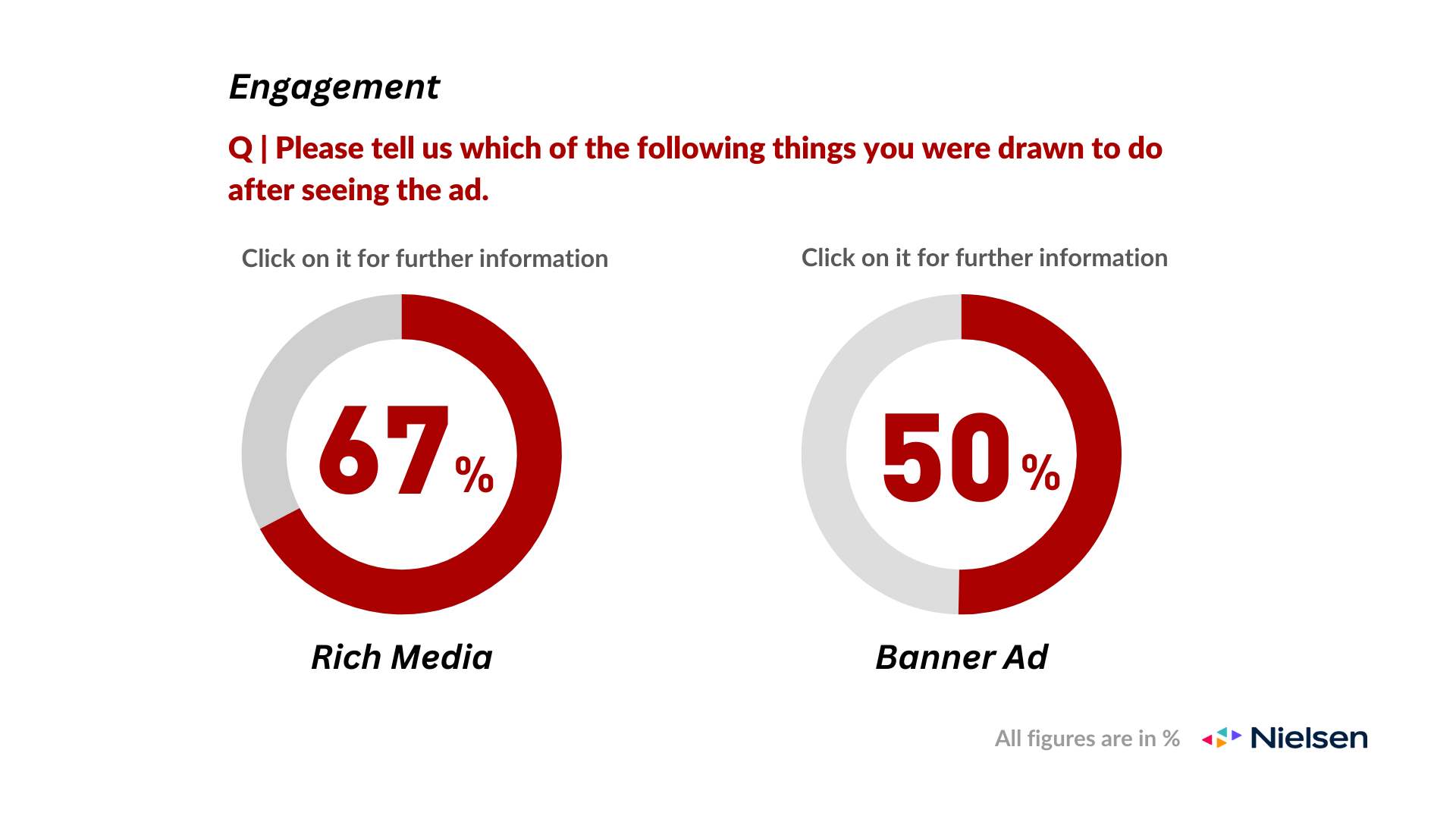A Comparative Study of Rich Media vs. Banner Ads – Insights from FreakOut, Nielsen, and Hyundai
Contents
Banner Ads
The Year is 1994. The first banner ad appears on hotwired.com, changing marketing forever, and paving the way for digital advertising.
Banner ads are standard, rectangular display ads that span across the top, bottom, or sides or a web page or online publication property. Over the years, as users switched from desktop screens to mobile devices, advertisers had to adapt these banner ads to fit smaller screens and changing user behaviors.
Rich Media Ads
In 1996, the standard banner ad produced an offshoot. For the first time ever, users were able to do more than just click on a rectangular space and be directed to another window (i,e more than one click-through or interactive element). In fact, the first of its kind offered users an interactive display of the video-game classic “Pong”.
But before that journey led us to Rich Media as we know it today, pop-up ads and auto-expand ads littered the internet. No priority was given to user experience, and those formats were short lived. Brands soon realized that the user experience was an extension of their message. Sensible guidelines and initiatives such as IAB SafeFrame, and IAB Rising Star were enacted and quickly adopted by many rich media vendors.
Rich Media vs Banner Ads
The discussion between the effectiveness of rich media vs banner ads is a long-standing debate in the ad tech field. Rich Media ads are dynamic and engaging, equipped with videos, animations, and interactive features, and can provide CTRs of up to 267% higher compared to banner ads. However, this may contribute to longer load times, technical complexities and possibly run a risk of providing a disruptive user experience.
On the other hand, while banner ads may be static and predictable, they often are cheaper, have faster load rates, and to a great extent, do not interfere with the user experience. If anything, these standard display ads often lead to banner blindness and go by completely unseen/unnoticed.
FreakOut Collaborates with Nielsen and Hyundai
FreakOut, in collaboration with Nielsen and Hyundai, embarked on an extensive research initiative to shed light on the effectiveness of rich media and banner ads. Recognizing the importance of data-driven insights, the partnership aimed to provide advertisers with valuable information to inform their advertising strategies. The survey was conducted in Indonesia.
Methodology
To assess the performance and compare Rich Media and Banner Ads, a controlled mock site environment was utilised. The primary goal was to evaluate the creative aspects of the ads. In the study, respondents were presented with both types of ads in a loop sequence.
The process involved showing the respondents Hyundai’s Rich Media ad on a mock site for a duration of 60 seconds. Subsequently, they were exposed to Hyundai’s Banner ad on the mock site for an equal duration of 60 seconds. The order in which the ads were presented was randomised to eliminate any potential bias and ensure accurate results.
Similarly, after spending 60 seconds browsing each mock site, they were directed back to the survey platform to complete identical questionnaires.
Executive Summary

Overall, the research findings indicate that Rich Media ads outperform Banner ads in terms of effectiveness. A majority of respondents expressed positive perceptions towards Rich Media ads in terms of engagement, likeability, impact, and purchase intent. In contrast, Banner ads received favorable feedback from only two-fifths of the participants.
Engagement
Rich Media ads excel in capturing user attention and driving desired actions, making them more engaging than Banner ads.

For instance, the Hyundai STARGAZER Rich Media ad garnered higher visibility and generated more clicks. Approximately two-thirds of respondents were enticed to click and interact with the Rich Media ad, while only half showed interest in engaging with the Banner ad. Notably, the study discovered that among younger individuals (aged 25-34 years), less than one-third displayed an inclination to click on the banner ad.

Purchase Intent
Furthermore, Rich Media ads demonstrated a significant influence on respondents’ purchase intent. The creative content of Rich Media ads proved nearly 50% more successful in generating interest among users to make a purchase.

Effectiveness
Additionally, the survey revealed that Rich Media ads offer a superior user experience compared to Banner ads, as they are less disruptive and provide users with more informative content.

Conclusion and Closing Remarks
In conclusion, Rich Media emerges as the preferred ad format, surpassing Banner ads in overall effectiveness. Its ability to enhance user experience, drive more clicks, and improve purchase intent by up to 50% makes it a compelling choice for brands and advertisers. Moreover, Rich Media ads hold particular significance for younger audiences, who exhibit limited enthusiasm for engaging with traditional Banner ads.
FreakOut Rich Media
Experience the full potential of Rich Media ads with our end-to-end Rich Media solution. With an extensive range of creative formats and the flexibility for customization, we have the perfect format to elevate your campaigns and achieve your objectives.
Harness the power of our premium publisher network, consisting of over 2000 mobile sites, to reach your target audience effectively. We have partnered with over 1500 advertisers to deliver a successful Rich Media campaign. Our team of experts is well-equipped with local market knowledge, and our collaborative approach across APAC gives us the unique advantage of global execution.
Related Articles:
FreakOut, In Cooperation With Hyundai And Nielsen, Released The Latest Research On User Experience With Native Advertising ー Native V.S. Widget V.S. Banner
How to Overcome Banner Blindness
[Case Study] Spiderman: No Way Home




